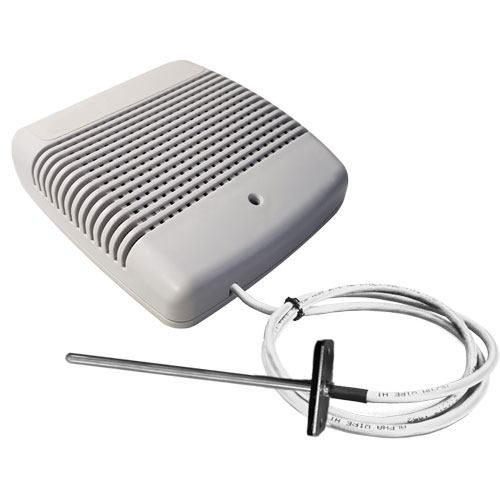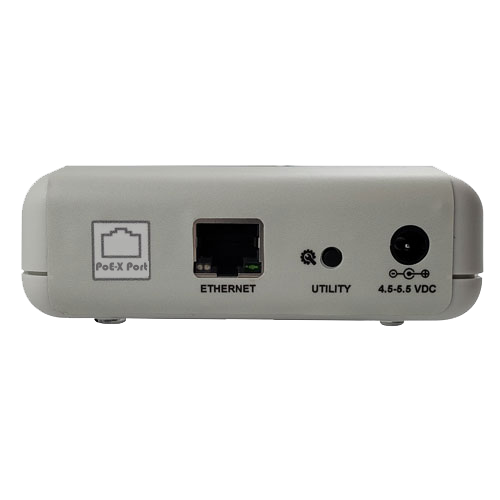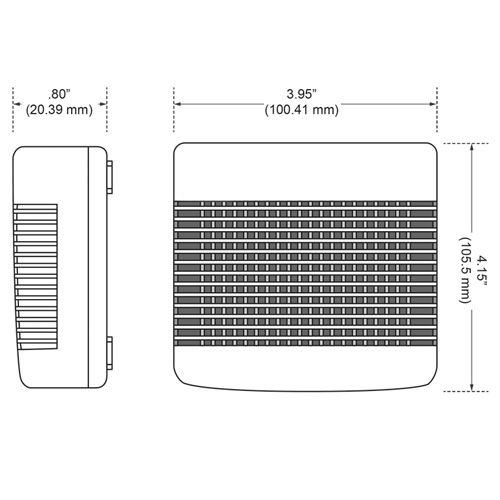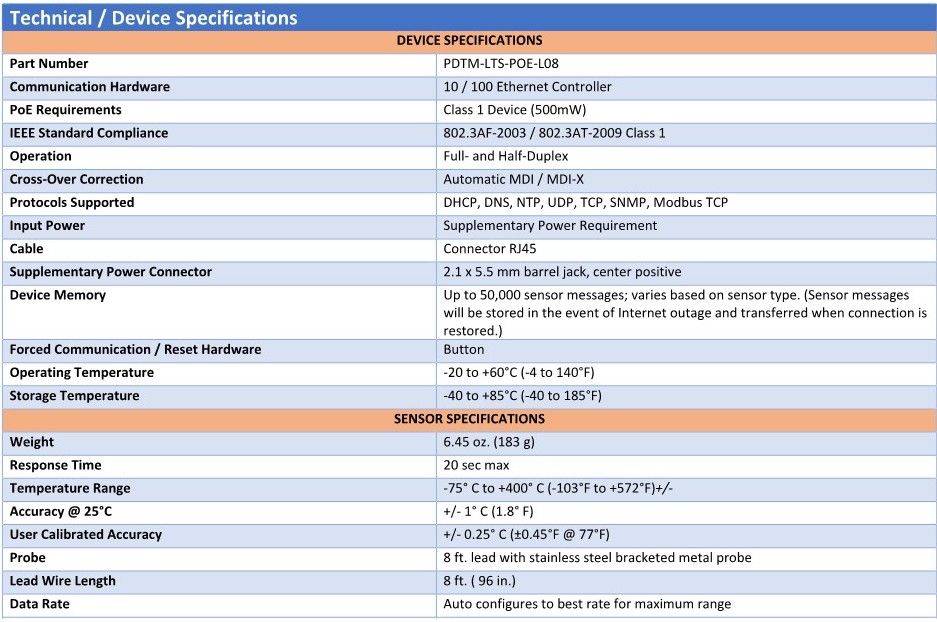



General Description
The Power-over-Ethernet (PoE) Duct Temperature Sensor uses an NTC thermistor with 8 ft. lead wires to accurately measure temperatures in duct work, while maintaining a sealed environment. Can be easily installed and mounted for long term use. It is programmed to sleep for a user-given time interval (heartbeat) and then wakeup, send power to the temperature probe, wait for temperature to stabilize, then transmit the temperature data to iProTAACS.
Features
- Power-over-Ethernet ready (injector hardware required)
- Embedded LEDs for transmission & online condition indicators
- 50,000 sensor message memory (non-volatile)
- Modbus TCP & SNTP v1 interface capabilities
- No PC required (managed through apps and smart devices)
- Remote update capable w/automatic updates
- Works with iProTAACS Cloud and Enterprise software applications
- Optional 5V DC power supply available

Example Applications
- Air Duct Temperature Monitoring
- Environmental Temperature Monitoring
- Smart Machines & Smart Structures
- Coolers & Freezers Temperature Monitoring
- Datacenter Monitoring
- HVAC Operation & Testing
- And Many More
Commercial Grade Sensors
ProTAACS commercial-grade sensors are designed for applications in ordinary environments (normal room temperature, humidity, and atmospheric pressure). Do not subject these sensors to the following, as these environmental aggressors could degrade the device and its performance, leading to failures and burn-out:
- Corrosive or deoxidizing gas, e.g., chlorine gas, hydrogen sulfide gas, ammonia gas, sulfuric acid gas, andnitric oxides
- Volatile or flammable gas
- Dusty conditions
- Extremely low or high pressures
- Wet or excessively humid locations
- Places where saltwater, oils, chemical liquids, or organic solvents are routinely present
- Applications/locations prone to excessive or strong vibration
- Other sites where similar hazardous conditions exist
Use these products within the ProTAACS-specified temperature range. Higher temperatures could deteriorate both the product and its functionality.